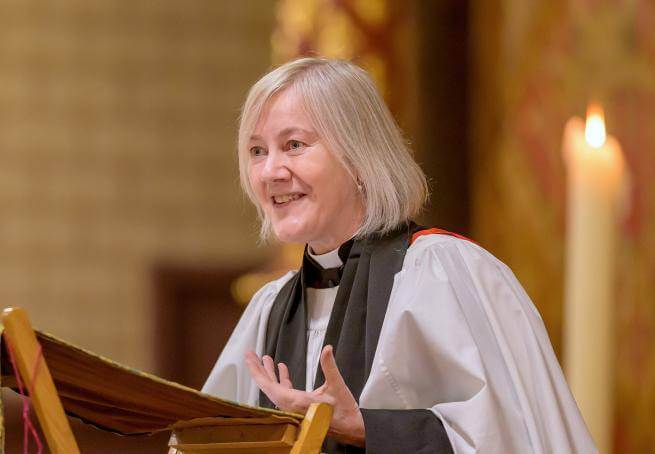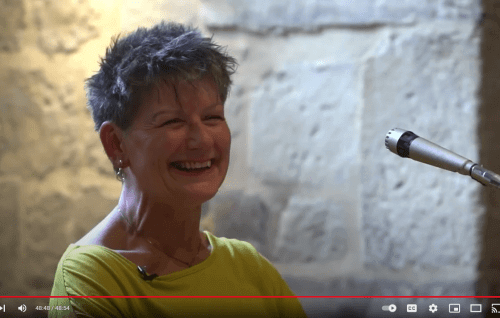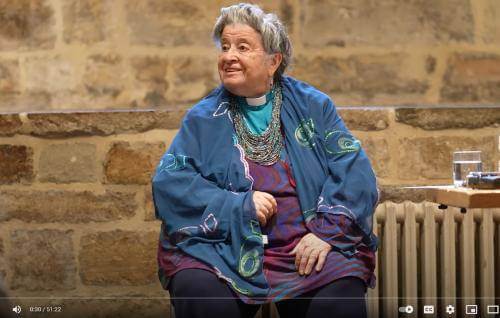Down-to-earth mysticism
Down-to-earth mysticism
Ellen Clark-King explores mysticism through some well-known and lesser-known mystics this October.
1. Evelyn Underhill: Mysticism unmystified
Mysticism can be a marmite sort of word – deeply attractive to some people and in some ways, deeply alienating to others. It can make you think of the depths of meaning and of life, of profundity and wisdom and holiness. It can also feel airy-fairy and insubstantial, and something that is only relevant to hyper-pious weird, and likely medieval, saints.
Evelyn Underhill, the 20th century English writer, was one who was deeply attracted to mysticism and who also wanted to make it accessible and comprehensible to all of us ordinary people. Her definition of it was rooted in our relationship with God. Mysticism for her was: ‘the direct intuition or experience of God’, making a mystic ‘a person who has, to a greater or less degree, such a direct experience’. Nothing to do with ecstatic visions or altered consciousness but simply and profoundly to do with our awareness of God’s presence with us.
This is mysticism in a more down-to-earth form, mysticism unmystified perhaps. It reminds us that experiences of God are not limited to saints, let alone to medieval saints. All of us are invited to know the love and presence of God in our own lives, however imperfect our faith and erratic our prayer.
That connection with the divine mystic depth of reality can come fleetingly in a moment of silence shared with others, it can come with the fresh scent of spring in a favourite wood, it can come in the depth of loss as we accept our human finitude, or it can come in the thrill of joy when we know ourselves truly loved.
Be open to the possibility that you may have already felt, or may yet discover, that sense of union with the divine that marks a mystic experience. The profundity of our deepest reality, God’s divine loving presence, is there for each one of us to discover and to love.
2. Thomas Traherne: Centuries of Meditations
A mystic very close to my heart is Thomas Traherne, a 17th century Herefordshire priest. His home cathedral was also where I was ordained, and his county the beautiful home of my first years in ministry. Traherne is often remembered in churches today, 10th October, the date of his burial in 1674.
Traherne’s mysticism and poetry was firmly anchored in the physical world, not airy-fairy but earthy and embodied. His most renowned work, Centuries of Meditations abounds with joyful reflections on the encounter with God to be had in the beauty of creation.
One of Traherne’s most famous passages sings with delight in the natural world that surrounds us and in the God who created it:
“You never enjoy the world aright, till the Sea itself floweth in your veins, till you are clothed with the heavens, and crowned with the stars … Till you can sing and rejoice and delight in God, as misers do in gold, and Kings in sceptres, you never enjoy the world.”.
For Traherne the last thing mysticism means is a retreat from the physical: God has given us this earth to love and enjoy and to know as a place where we can truly encounter the divine.
Traherne’s mysticism is very positive about human nature as well as the natural world. He tells us: “You are as prone to love as the sun is to shine”. His mysticism neither takes us away from this world nor believes we have to be someone extraordinary in order to find love and so to find God.
All we need to do is open our eyes, minds, and hearts to the glory that already surrounds us in this physical world, God’s great gift to all people. So see what beauty you can find and love in these autumn months, and let it open your heart in thanksgiving to God.
3. Margaret Spufford: Mysticism in Pain
It’s unusual to find a book about pain with the title Celebration but this is what the 20th century English historian and mystic Margaret Spufford chose to call her book on spirituality. The full title is Celebration: A Story of Suffering and Joy. The book tells of Spufford’s suffering from her own ongoing physical pain as well as from her daughter Bridget’s illness and eventual early death from a rare metabolic disease.
Just to be clear, Spufford is not celebrating suffering. She is brutally honest about the deep misery, in bone and soul, of physical and emotional pain, and crystal clear that this is never the will of God. The joy that she finds in the midst of suffering rests on her experience that God’s presence, especially the incarnate Christ’s presence, companions her through her pain.
Spufford had three key mystical experiences, three times that she most vividly encountered the divine, that showed her three deep spiritual truths.
The first was seeing the Spirit of God flowing out to her and to all Christians with loveliness and warmth, swirling gently ‘all round the broken bits’ with loving touch. The second was an assurance of God’s companionable presence in pain. In a moment of intense physical agony she knew with certainty that Christ was with her, not taking the pain away but experiencing it in loving companionship. The third was of the truth of the resurrection. After Bridget’s death she experienced receiving her daughter back in her arms as Christ looked on with deep love. Spufford said of this vision that after it she lived ‘from Easter backwards’ within the conviction that ‘The Lord is risen indeed, and is full of joy, as well as knowing all pain.’
Whatever the pain in your own life may you also know the Spirit’s warming touch, Christ’s companionship, and the hope of resurrection.
4. George Herbert: Mysticism in the Everyday
Teach me, my God and King,
In all things thee to see,
And what I do in any thing,
To do it as for thee:
All may of thee partake:
Nothing can be so mean,
Which with his tincture (for thy sake)
Will not grow bright and clean.
A servant with this clause
Makes drudgerie divine:
Who sweeps a room, as for thy laws,
Makes that and th’ action fine.
This is the famous stone
That turneth all to gold:
For that which God doth touch and own
Cannot for lesse be told.
I always wanted to be a priest like George Herbert, a true poet and pastor. I soon had to get over myself and accept that I was someone much more workaday, far more ordinary!
So it helps to have these verses from his poem The Elixir to remind me that encounters with God can happen to anyone and in the midst of the everyday. Herbert’s God is one who is never distant or too grand to pay attention to ordinary women and men as they in turn try to pay attention to the divine. Mysticism isn’t only for the ‘professionally religious’ like clergy or monks and nuns, all of us can meet with God whatever it is we do. Our incarnate and immanent God doesn’t disdain any part of human life but inhabits all of it. We just need to open our eyes and our minds to see this truth.
This is a mysticism which shows, to quote this time from Herbert’s poem Prayer: ‘Heaven in ordinary, man well dressed’. Whatever we are doing in our day to day lives God is just waiting for us to remember the divine love and presence that are also part of the day to day. All we need to do to know that the divine glory that suffuses our mundane and worldly lives is to accept God’s invitation with intention and trust.
5. Julian of Norwich: Mysticism and Love
I was ordained on the eve of St Julian’s Day in 1994, the first year the Church of England allowed women to be priests. At the end of the service as we processed out dozens of balloons were dropped from Hereford Cathedral ceiling all bearing the words ‘All shall be well’.
Julian’s most famous quote, “All shall be well, and all shall be well, and all manner of things shall be well”, is almost too well-known, and sometimes used too glibly, to feel like a real revelation of her encounter with God. But it is fundamental to the nature of the God that she saw in her visions: a God without anger but with consistent love yearning for the wellbeing and flourishing of all the world.
It is this confidence in God’s loving nature that gives Julian her conviction that all shall be well: “What, do you wish to know your Lord’s meaning in this thing? Know it well, love was his meaning. Who reveals it to you? Love. What did he reveal to you? Love. Why does he reveal it to you? For love.”
This, for me, is the beginning and end of mysticism: the encounter with a God who is pure love. For some it comes in ecstatic visions, for most of us it comes in bright moments in the middle of the everyday. In the beauty of a garden at evening, in the sense of being companioned through pain, in the everyday round of labour well done, in the voice and touch of one who loves us.
This is why all shall ultimately be well because all that is, including you and I, are held in the hands of our loving God who is always willing our good and always closer than our own breathing. Mystics or not, God is there for each one of us every day.








